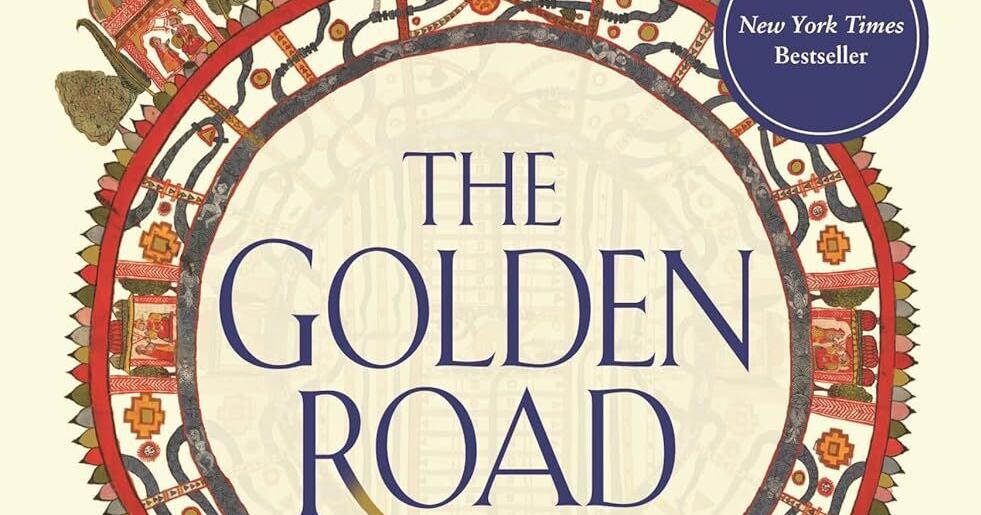Copyright Charleston Post and Courier

THE GOLDEN ROAD: How Ancient India Transformed the World. By William Dalrymple. Bloomsbury. 432 pages. $32.99. Toward the end of “The Golden Road: How Ancient India Transformed the World,” historian William Dalrymple quotes an observation made by the Bengali polymath Rabindranath Tagore about a visit he made to Southeast Asia in 1927. Of what he found there, Tagore wrote, “Everywhere I could see India, yet I could not recognize it.” Dalrymple’s overarching theme in “The Golden Road,” is that the influence of India is strongly stamped on the history of both the East and West from the time of the Roman Republic to the Middle Ages (to use European points of reference). We have just been unable — or unwilling — to recognize it. But that has not always been the case. The Romans, with whom Dalrymple begins his engaging and thoroughly convincing narrative, maintained an extensive, transformative and widely acknowledged trade with India beginning at the end of the 1st century BCE when Egypt’s Red Sea ports came firmly under the control of Rome’s burgeoning Empire. Having mastered the semiannual monsoon winds that blow into and out of the great bellows of the Tibetan plateau, Romans sailed to and from the east coast of the subcontinent with remarkable speed and efficiency. What these traders sought were gems, exotic woods, cloth and spices — particularly pepper — to perennially demanding Roman markets. In exchange came massive amounts of Roman gold, so much so that the conservative Roman Pliny the Elder complained that India was “the sink of the World’s most precious metals.” The impact of this exchange was profound. Dalrymple estimates that the value of Indian goods entering Roman ports was over 1 billion sesterces each year, yielding something in the order of an annual 270 million sesterces in taxes to the Roman Treasury. This when the annual cost of Rome’s critical defenses on the Rhine was $88 million sesterces. The incoming Indian goods were also the basis of much of the material culture that we associate with the Rome of the Caesars. The diamonds, rubies, amethysts, silks, sandalwood, ebony, teak and ivory that graced villas and palaces all came from India. So did exotic animals — like tigers and elephants — for the gladiatorial spectacles staged in the Coliseum and throughout the Empire. There was also significant technological and cultural exchange between Rome and its Indian trading partners. The stirrup, developed in Central Asia, came to Imperial Rome through the Indian trade, as did the institution of religious monasticism, which arose in Buddhist India and came to Christianized Roman Egypt in late antiquity. Even after trade with the West broke down in the latter part of the first millennium, Indian ideas would continue to flow westward. The Buddhist concept of centers of learning organized around libraries like the Buddhist “university” at Nalanda (founded in 427 A.D.) would make its way from India through Muslim Spain to Europe in the 11th century. Most notably, at the same time, Hindu numbers (which we call “Arabic numbers”) made their way to Europe, along with Musa Khwarizmi’s The Compendious of Calculating by Completion and Balancing, According to the Hindu Calculation” (820 A.D.), which introduced the West to the truly revolutionary concepts of zero and decimal notation. Rome would influence India in turn, helping to introduce the representation of the Buddha to Buddhist art in the 2nd and 3rd centuries. As he does throughout “The Golden Road” in his deft and evocative descriptions and analyses of Indian, Chinese, and Southeast Asian art and architecture, Dalrymple makes a strong case that these early images of the Buddha, produced primarily in the northern region of Gandhara, have more in common with representations of the Caesars than anything that preceded them in the native Indian tradition. The profound interaction with the Roman West notwithstanding, it is the development and spread of Buddhism in the East that is at the heart of “The Golden Road,” and Dalrymple accurately describes it as perhaps the greatest example of the influence of “soft power” in history. “At once a philosophy, an ideology and a method, a practical spiritual path of mental training and discipline,” Buddhism spread from the Gangetic Plain more from scholarship and adoption than war and imposition. The Emperor Ashoka, whose kingdom stretched from modern day Afghanistan to Bangladesh in the 3rd century, studied and adopted Buddhism and decreed that “any sons or grandsons I may have should not think of new conquests… (but) should think only of conquest by dharma (right way of living).” The Kushan rulers of what is now Afghanistan, Pakistan and portions of Northern India allowed for the spread of Buddhism north and east in succeeding centuries, resulting in the discernable extension of the Indosphere to China by the 4th century. Dalrymple’s treatment of the influence of Buddhism on China, the most engaging section of “The Golden Road,” focuses on two remarkable figures. First, the monk Xuanzang, who traveled thousands of dangerous miles and spent a decade in India in the 7th century in order to bring hundreds of Buddhist scriptures to China and solidify Buddhism there. Second, the Empress Wu Zetian, who adopted Buddhism and used scriptures brought by Xuanzang to support her reign as China’s only independent Empress from 680-705. In addition to refuting the longstanding concept of a China-based “Silk Road” to the West (a 19th century German geographer’s invention, it seems) in favor of the eponymous “Golden Road” with India at the center, Dalrymple demonstrates a substantial and lasting Indian influence on China and Southeast Asia, from the development of the pagoda in Chinese architecture and the Indian Buddhist stupa to the wholesale adoption of Indian cosmology and mythology, which are so powerfully depicted in the great temple complex at Angor Wat in what is now Cambodia. “The Golden Road” is a magnificent achievement. It is informative, stunningly comprehensive, and its stories are lavishly and compelling told. It should help us recognize India in places where we could not before.



